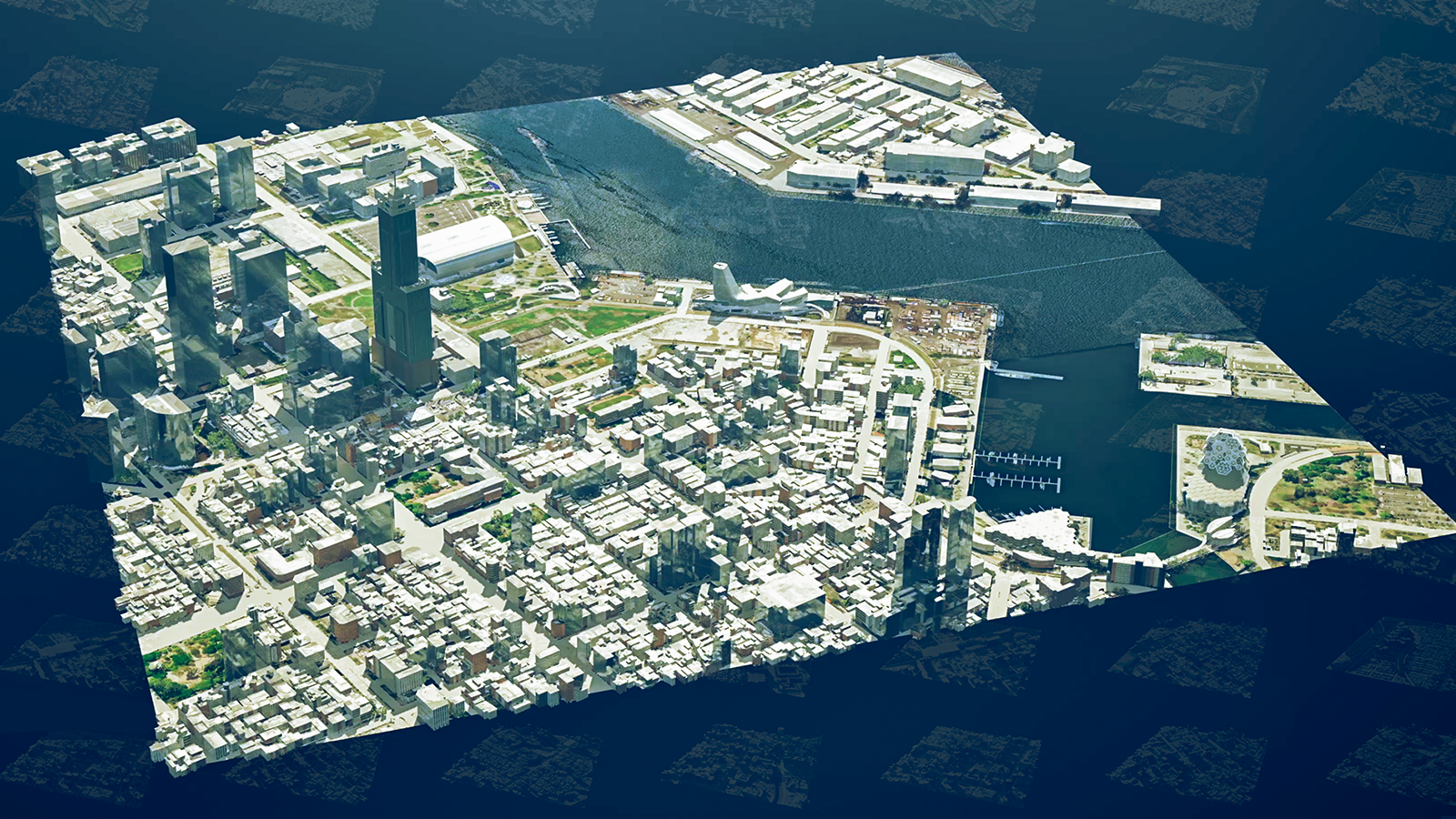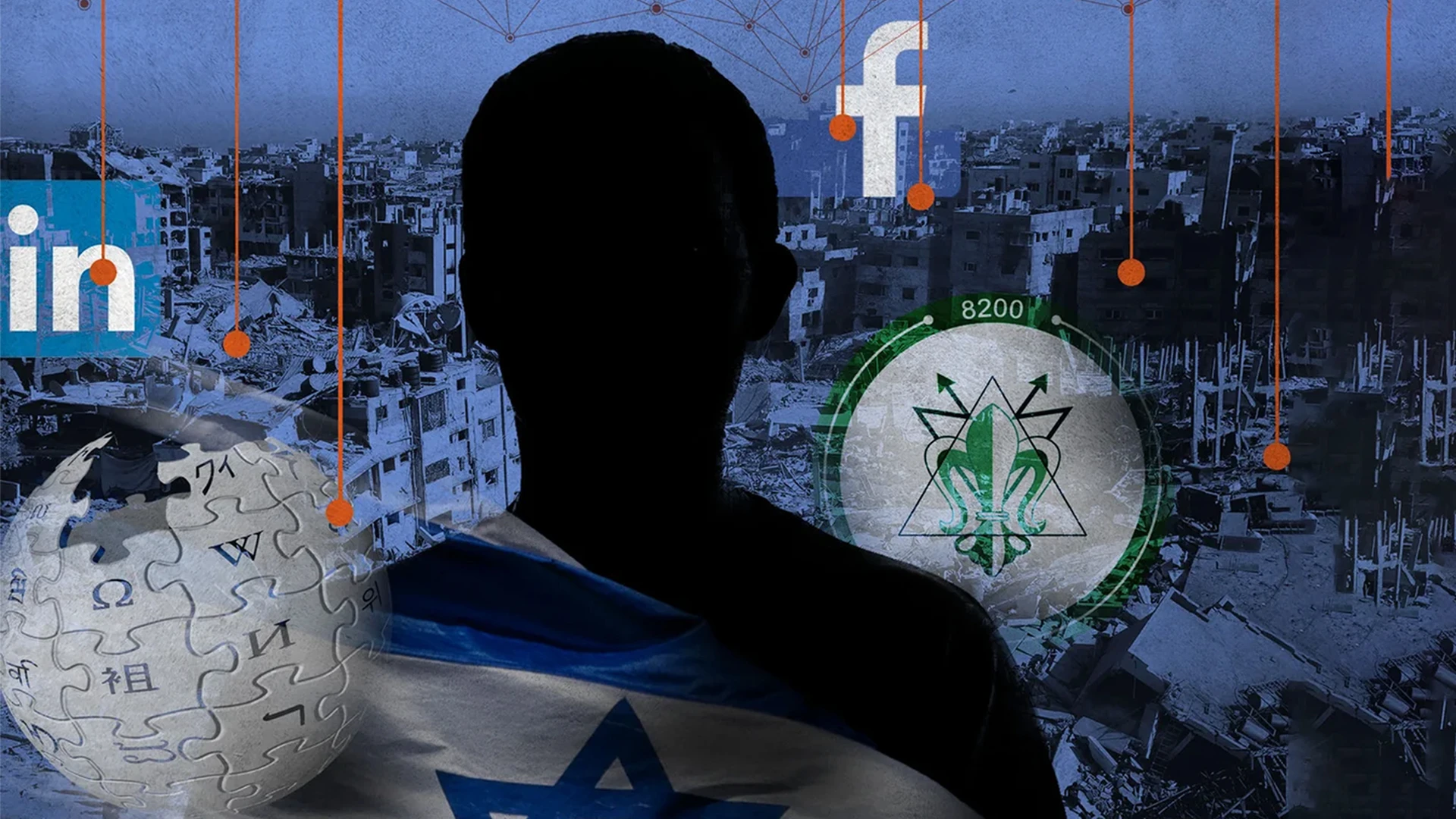NVIDIA Brings Physical AI to European Cities With New Blueprint for Smart City AI
Urban populations are expected to double by 2050, which means around 2.5 billion people could be added to urban areas by the middle of the century, driving the need for more sustainable urban planning and public services. Cities across the globe are turning to digital twins and AI agents for urban planning scenario analysis and data-driven operational decisions.
Building a digital twin of a city and testing smart city AI agents within it, however, is a complex and resource-intensive endeavor, fraught with technical and operational challenges.
To address those challenges, NVIDIA today announced the NVIDIA Omniverse Blueprint for smart city AI, a reference framework that combines the NVIDIA Omniverse, Cosmos, NeMo and Metropolis platforms to bring the benefits of physical AI to entire cities and their critical infrastructure.
Using the blueprint, developers can build simulation-ready, or SimReady, photorealistic digital twins of cities to build and test AI agents that can help monitor and optimize city operations.
Leading companies including XXII, AVES Reality, Akila, Blyncsy, Bentley, Cesium, K2K, Linker Vision, Milestone Systems, Nebius, SNCF Gares&Connexions, Trimble and Younite AI are among the first to use the new blueprint.
NVIDIA Omniverse Blueprint for Smart City AI
The NVIDIA Omniverse Blueprint for smart city AI provides the complete software stack needed to accelerate the development and testing of AI agents in physically accurate digital twins of cities. It includes:
NVIDIA Omniverse to build physically accurate digital twins and run simulations at city scale.
NVIDIA Cosmos to generate synthetic data at scale for post-training AI models.
NVIDIA NeMo to curate high-quality data and use that data to train and fine-tune vision language modelsand large language models.
NVIDIA Metropolis to build and deploy video analytics AI agents based on the NVIDIA AI Blueprint for video search and summarization, helping process vast amounts of video data and provide critical insights to optimize business processes.
The blueprint workflow comprises three key steps. First, developers create a SimReady digital twin of locations and facilities using aerial, satellite or map data with Omniverse and Cosmos. Second, they can train and fine-tune AI models, like computer vision models and VLMs, using NVIDIA TAO and NeMo Curator to improve accuracy for vision AI use cases. Finally, real-time AI agents powered by these customized models are deployed to alert, summarize and query camera and sensor data using the Metropolis VSS blueprint.
NVIDIA Partner Ecosystem Powers Smart Cities Worldwide
The blueprint for smart city AI enables a large ecosystem of partners to use a single workflow to build and activate digital twins for smart city use cases, tapping into a combination of NVIDIA’s technologies and their own.
SNCF Gares&Connexions, which operates a network of 3,000 train stations across France and Monaco, has deployed a digital twin and AI agents to enable real-time operational monitoring, emergency response simulations and infrastructure upgrade planning.
This helps each station analyze operational data such as energy and water use, and enables predictive maintenance capabilities, automated reporting and GDPR-compliant video analytics for incident detection and crowd management.
Powered by Omniverse, Metropolis and solutions from ecosystem partners Akila and XXII, SNCF Gares&Connexions’ physical AI deployment at the Monaco-Monte-Carlo and Marseille stations has helped SNCF Gares&Connexions achieve a 100% on-time preventive maintenance completion rate, a 50% reduction in downtime and issue response time, and a 20% reduction in energy consumption.
The city of Palermo in Sicily is using AI agents and digital twins from its partner K2K to improve public health and safety by helping city operators process and analyze footage from over 1,000 public video streams at a rate of nearly 50 billion pixels per second.
Tapped by Sicily, K2K’s AI agents — built with the NVIDIA AI Blueprint for VSS and cloud solutions from Nebius — can interpret and act on video data to provide real-time alerts on public events.
To accurately predict and resolve traffic incidents, K2K is generating synthetic data with Cosmos world foundation models to simulate different driving conditions. Then, K2K uses the data to fine-tune the VLMs powering the AI agents with NeMo Curator. These simulations enable K2K’s AI agents to create over 100,000 predictions per second.
Milestone Systems — in collaboration with NVIDIA and European cities — has launched Project Hafnia, an initiative to build an anonymized, ethically sourced video data platform for cities to develop and train AI models and applications while maintaining regulatory compliance.
Using a combination of Cosmos and NeMo Curator on NVIDIA DGX Cloud and Nebius’ sovereign European cloud infrastructure, Project Hafnia scales up and enables European-compliant training and fine-tuning of video-centric AI models, including VLMs, for a variety of smart city use cases.
The project’s initial rollout, taking place in Genoa, Italy, features one of the world’s first VLM models for intelligent transportation systems.
Linker Vision was among the first to partner with NVIDIA to deploy smart city digital twins and AI agents for Kaohsiung City, Taiwan — powered by Omniverse, Cosmos and Metropolis. Linker Vision worked with AVES Reality, a digital twin company, to bring aerial imagery of cities and infrastructure into 3D geometry and ultimately into SimReady Omniverse digital twins.
Linker Vision’s AI-powered application then built, trained and tested visual AI agents in a digital twin before deployment in the physical city. Now, it’s scaling to analyze 50,000 video streams in real time with generative AI to understand and narrate complex urban events like floods and traffic accidents. Linker Vision delivers timely insights to a dozen city departments through a single integrated AI-powered platform, breaking silos and reducing incident response times by up to 80%.
Bentley Systems is joining the effort to bring physical AI to cities with the NVIDIA blueprint. Cesium, the open 3D geospatial platform, provides the foundation for visualizing, analyzing and managing infrastructure projects and ports digital twins to Omniverse. The company’s AI platform Blyncsy uses synthetic data generation and Metropolis to analyze road conditions and improve maintenance.
Trimble, a global technology company that enables essential industries including construction, geospatial and transportation, is exploring ways to integrate components of the Omniverse blueprint into its reality capture workflows and Trimble Connect digital twin platform for surveying and mapping applications for smart cities.
Younite AI, a developer of AI and 3D digital twin solutions, is adopting the blueprint to accelerate its development pipeline, enabling the company to quickly move from operational digital twins to large-scale urban simulations, improve synthetic data generation, integrate real-time IoT sensor data and deploy AI agents.
Learn more about the NVIDIA Omniverse Blueprint for smart city AI by attending this GTC Paris session or watching the on-demand video after the event. Sign up to be notified when the blueprint is available.
Watch the NVIDIA GTC Paris keynote from NVIDIA founder and CEO Jensen Huang at VivaTech, and explore GTC Paris sessions.
#nvidia #brings #physical #european #cities
NVIDIA Brings Physical AI to European Cities With New Blueprint for Smart City AI
Urban populations are expected to double by 2050, which means around 2.5 billion people could be added to urban areas by the middle of the century, driving the need for more sustainable urban planning and public services. Cities across the globe are turning to digital twins and AI agents for urban planning scenario analysis and data-driven operational decisions.
Building a digital twin of a city and testing smart city AI agents within it, however, is a complex and resource-intensive endeavor, fraught with technical and operational challenges.
To address those challenges, NVIDIA today announced the NVIDIA Omniverse Blueprint for smart city AI, a reference framework that combines the NVIDIA Omniverse, Cosmos, NeMo and Metropolis platforms to bring the benefits of physical AI to entire cities and their critical infrastructure.
Using the blueprint, developers can build simulation-ready, or SimReady, photorealistic digital twins of cities to build and test AI agents that can help monitor and optimize city operations.
Leading companies including XXII, AVES Reality, Akila, Blyncsy, Bentley, Cesium, K2K, Linker Vision, Milestone Systems, Nebius, SNCF Gares&Connexions, Trimble and Younite AI are among the first to use the new blueprint.
NVIDIA Omniverse Blueprint for Smart City AI
The NVIDIA Omniverse Blueprint for smart city AI provides the complete software stack needed to accelerate the development and testing of AI agents in physically accurate digital twins of cities. It includes:
NVIDIA Omniverse to build physically accurate digital twins and run simulations at city scale.
NVIDIA Cosmos to generate synthetic data at scale for post-training AI models.
NVIDIA NeMo to curate high-quality data and use that data to train and fine-tune vision language modelsand large language models.
NVIDIA Metropolis to build and deploy video analytics AI agents based on the NVIDIA AI Blueprint for video search and summarization, helping process vast amounts of video data and provide critical insights to optimize business processes.
The blueprint workflow comprises three key steps. First, developers create a SimReady digital twin of locations and facilities using aerial, satellite or map data with Omniverse and Cosmos. Second, they can train and fine-tune AI models, like computer vision models and VLMs, using NVIDIA TAO and NeMo Curator to improve accuracy for vision AI use cases. Finally, real-time AI agents powered by these customized models are deployed to alert, summarize and query camera and sensor data using the Metropolis VSS blueprint.
NVIDIA Partner Ecosystem Powers Smart Cities Worldwide
The blueprint for smart city AI enables a large ecosystem of partners to use a single workflow to build and activate digital twins for smart city use cases, tapping into a combination of NVIDIA’s technologies and their own.
SNCF Gares&Connexions, which operates a network of 3,000 train stations across France and Monaco, has deployed a digital twin and AI agents to enable real-time operational monitoring, emergency response simulations and infrastructure upgrade planning.
This helps each station analyze operational data such as energy and water use, and enables predictive maintenance capabilities, automated reporting and GDPR-compliant video analytics for incident detection and crowd management.
Powered by Omniverse, Metropolis and solutions from ecosystem partners Akila and XXII, SNCF Gares&Connexions’ physical AI deployment at the Monaco-Monte-Carlo and Marseille stations has helped SNCF Gares&Connexions achieve a 100% on-time preventive maintenance completion rate, a 50% reduction in downtime and issue response time, and a 20% reduction in energy consumption.
The city of Palermo in Sicily is using AI agents and digital twins from its partner K2K to improve public health and safety by helping city operators process and analyze footage from over 1,000 public video streams at a rate of nearly 50 billion pixels per second.
Tapped by Sicily, K2K’s AI agents — built with the NVIDIA AI Blueprint for VSS and cloud solutions from Nebius — can interpret and act on video data to provide real-time alerts on public events.
To accurately predict and resolve traffic incidents, K2K is generating synthetic data with Cosmos world foundation models to simulate different driving conditions. Then, K2K uses the data to fine-tune the VLMs powering the AI agents with NeMo Curator. These simulations enable K2K’s AI agents to create over 100,000 predictions per second.
Milestone Systems — in collaboration with NVIDIA and European cities — has launched Project Hafnia, an initiative to build an anonymized, ethically sourced video data platform for cities to develop and train AI models and applications while maintaining regulatory compliance.
Using a combination of Cosmos and NeMo Curator on NVIDIA DGX Cloud and Nebius’ sovereign European cloud infrastructure, Project Hafnia scales up and enables European-compliant training and fine-tuning of video-centric AI models, including VLMs, for a variety of smart city use cases.
The project’s initial rollout, taking place in Genoa, Italy, features one of the world’s first VLM models for intelligent transportation systems.
Linker Vision was among the first to partner with NVIDIA to deploy smart city digital twins and AI agents for Kaohsiung City, Taiwan — powered by Omniverse, Cosmos and Metropolis. Linker Vision worked with AVES Reality, a digital twin company, to bring aerial imagery of cities and infrastructure into 3D geometry and ultimately into SimReady Omniverse digital twins.
Linker Vision’s AI-powered application then built, trained and tested visual AI agents in a digital twin before deployment in the physical city. Now, it’s scaling to analyze 50,000 video streams in real time with generative AI to understand and narrate complex urban events like floods and traffic accidents. Linker Vision delivers timely insights to a dozen city departments through a single integrated AI-powered platform, breaking silos and reducing incident response times by up to 80%.
Bentley Systems is joining the effort to bring physical AI to cities with the NVIDIA blueprint. Cesium, the open 3D geospatial platform, provides the foundation for visualizing, analyzing and managing infrastructure projects and ports digital twins to Omniverse. The company’s AI platform Blyncsy uses synthetic data generation and Metropolis to analyze road conditions and improve maintenance.
Trimble, a global technology company that enables essential industries including construction, geospatial and transportation, is exploring ways to integrate components of the Omniverse blueprint into its reality capture workflows and Trimble Connect digital twin platform for surveying and mapping applications for smart cities.
Younite AI, a developer of AI and 3D digital twin solutions, is adopting the blueprint to accelerate its development pipeline, enabling the company to quickly move from operational digital twins to large-scale urban simulations, improve synthetic data generation, integrate real-time IoT sensor data and deploy AI agents.
Learn more about the NVIDIA Omniverse Blueprint for smart city AI by attending this GTC Paris session or watching the on-demand video after the event. Sign up to be notified when the blueprint is available.
Watch the NVIDIA GTC Paris keynote from NVIDIA founder and CEO Jensen Huang at VivaTech, and explore GTC Paris sessions.
#nvidia #brings #physical #european #cities













